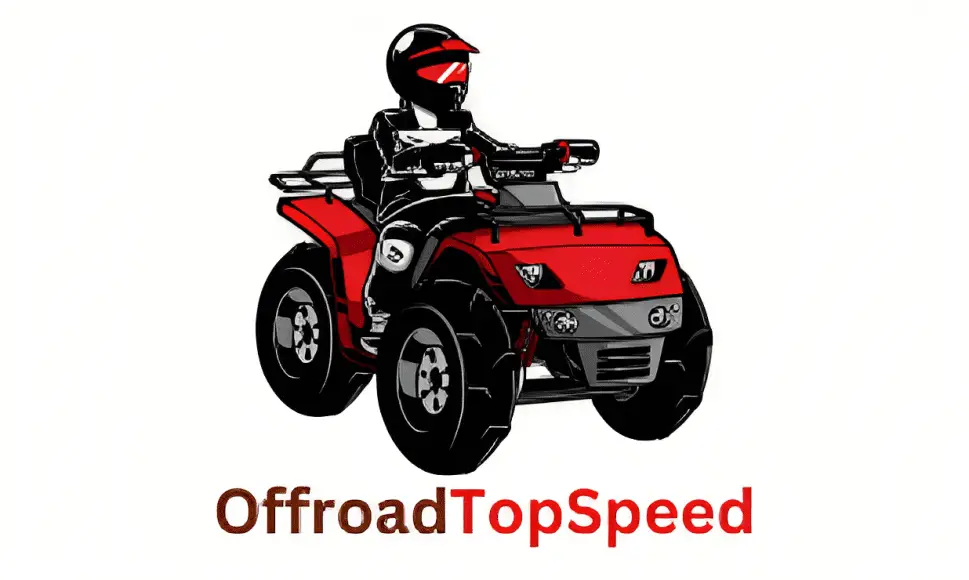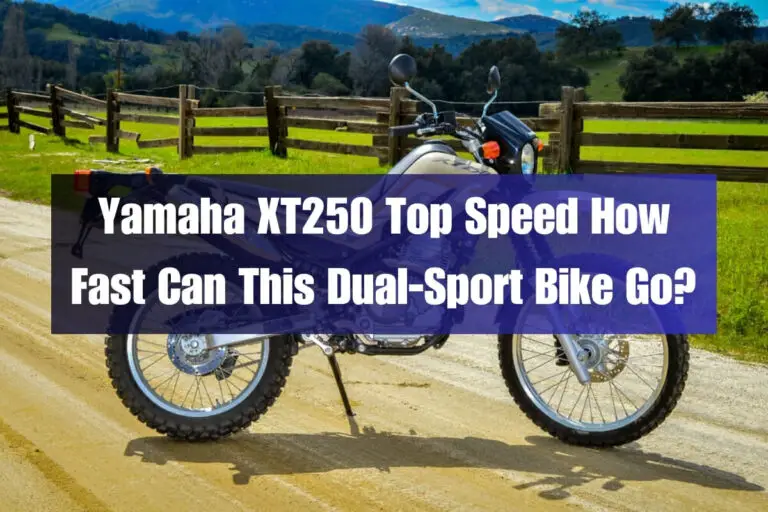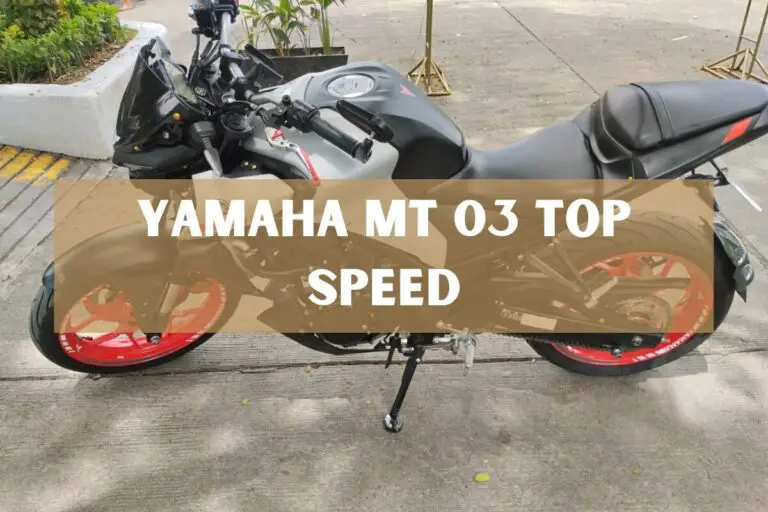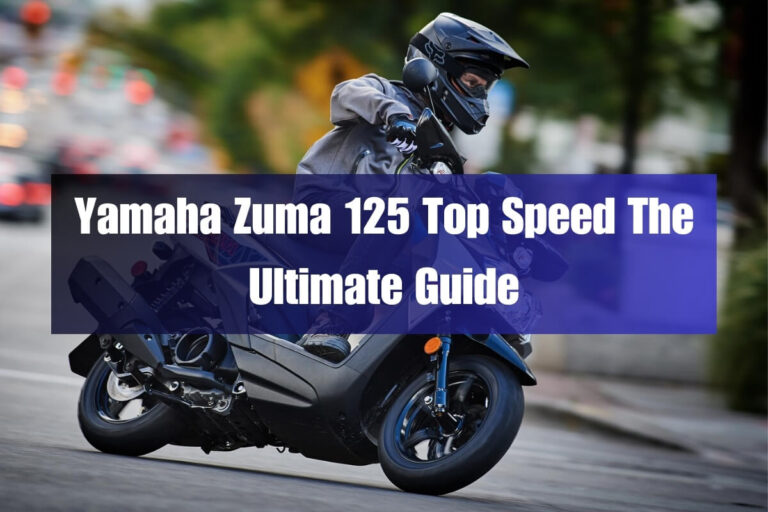Yamaha TW200 Top Speed: The Real-World Truth Revealed
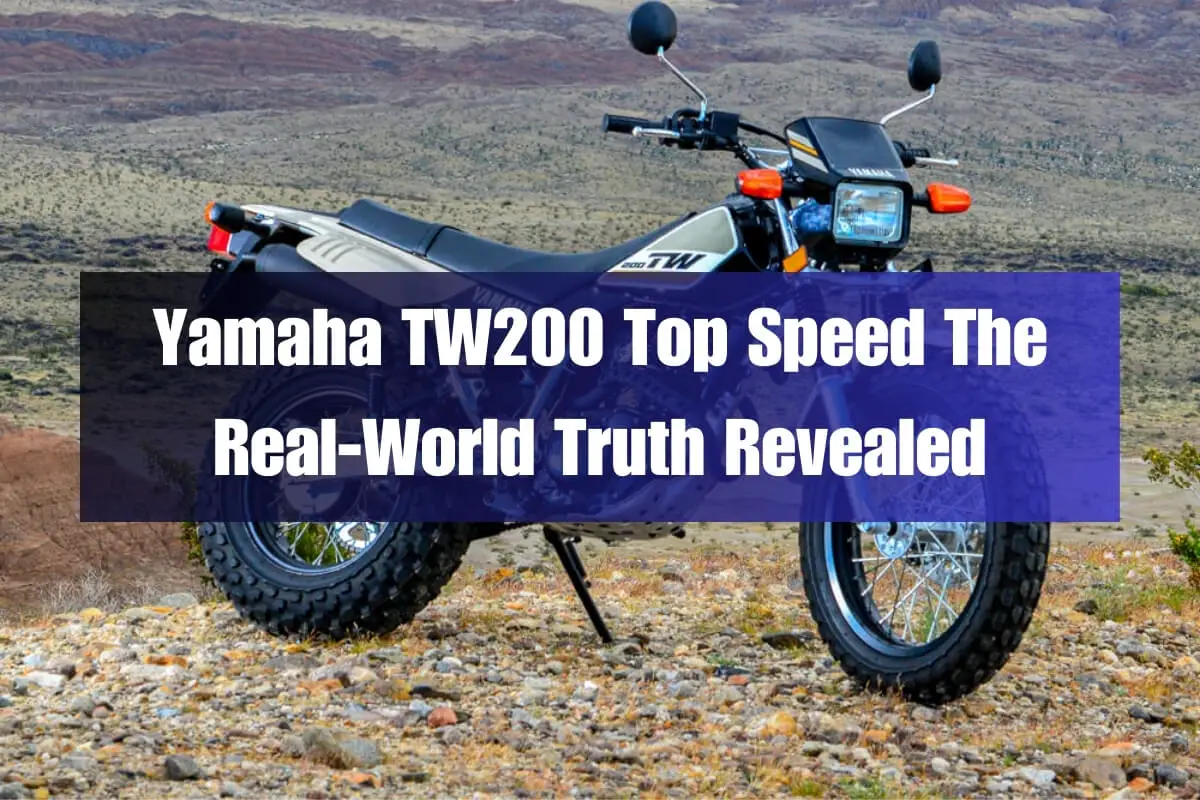
Are you curious about how fast the iconic Yamaha TW200 dual-sport bike can really go? This retro-styled on/off-road machine has been a staple in Yamaha’s lineup for decades, beloved by beginners and seasoned riders alike for its simplicity and versatility. But when it comes to top speed, there’s more to the story than just a single number.
So, let’s uncover the reality of the TW200’s top speed capabilities. We’ll look at official specs, real-world accounts from owners, how it stacks up against competitors, and what factors can impact its performance. So buckle up and let’s explore the true top speed potential of this beloved dual-sport bike.
Yamaha TW200 Overview
Before we get into the nitty-gritty of its top speed, let’s quickly go over the key specs and features that define the TW200:
- 196cc air-cooled SOHC single-cylinder engine
- 5-speed manual transmission
- Electric start
- 31.1″ low seat height
- 278 lb wet weight
- 18″ front & 14″ rear spoke wheels with fat dual-sport tires
- Long-travel suspension (6.3″ front, 5.9″ rear)
As you can see, the TW200 is designed to be an approachable, lightweight dual-purpose bike able to handle mild off-road trails while still being street-legal. Its low weight, ample suspension travel, and meaty tires give it admirable capabilities in the dirt.
How Fast Can the TW200 Go?
Now to address the burning question – what is the actual top speed of the Yamaha TW200? According to Yamaha’s official specs, the TW200 has a top speed in the range of 66-73 mph.
However, many real-world owners have reported varying experiences. Some say they’ve only been able to coax around 60-65 mph out of their TW200s on a good day. Others claim to have seen 70 mph or even up to 80 mph on rare occasions when everything was perfect.
A number of factors can influence the TW200’s real-world top speed performance:
- Rider weight and riding position (ability to tuck in)
- Elevation and ambient air temperature/density
- Wind conditions
- Overall bike condition and maintenance
- Tire type and pressure
- Fuel quality
So while Yamaha’s 66-73 mph range is a good baseline, the actual peak speed you’ll experience on a TW200 can vary quite a bit depending on the specific conditions and your ability to extract every last mph.
Test Ride Impressions
To get a better feel for what it’s really like to push the TW200 to its top speed, I took one for a extended test ride on a warm, dry day with mild winds. Here are my personal observations:
Accelerating up to around 60 mph, the little 196cc thumper engine felt reasonably peppy and vibrated moderately. The fatty tires and long suspension made for a plush, controlled ride.
However, trying to wrestle those last 5-10 mph was a battle. Vibrations became quite intense as the revs climbed extremely high into the engine’s upper limits. Top-gear roll-on throttle response was very anemic above 65 mph.
My personal max speed registered on the speedo was 71 mph, achieved by tucking in as aerodynamically as possible on a slight downhill section with a quartering tailwind. Holding that speed was precarious – any smaller hills or wind shifts had me struggling to maintain it.
Cruising at 70+ for very long didn’t feel comfortable or sustainable. The extreme engine vibration at that rpm, constant bar wiggle from the tall geometry, and lack of fairing protection from wind blast made it a frenetic experience.
In summary, while a wild TW200 may eventually hit 70+ mph under perfect conditions, actually riding at those speeds for anything more than short bursts is far from ideal. This bike’s sweet spot seems to be around 50-60 mph before the excessive vibration and low top-end power become too compromising.
TW200 Owner Reviews
Of course, my impressions are just one data point. So let’s look at some actual feedback from TW200 owners across reviews and forums:
Positive:
“Sure it’s not a race bike, but for backroad exploring and tight trails, the TW200 is simply brilliant. I can cruise it at 55-60 mph comfortably, which is about perfect for my style of riding.”
“I love my little thumper! It may be slow, but it’s a hoot to wring every last rpm out of the gutsy motor. And the look on people’s faces when I blow by them at 70+ mph…”
Negative:
“Trying to take this thing on the highway is asking for trouble. It feels completely overmatched and terrifying over 65 mph. More suited for backroads and trails.”
“The extreme vibration at higher rpm is crazy and will shake your fillings loose after awhile. Just not designed for sustained high speeds.”
Overall, most owners seem to accept and even embrace the TW200’s modest top speed on the street, praising its trail capabilities instead. Those seeking serious highway performance look elsewhere.
Pros & Cons for Performance:
Pros:
- Affordable
- Simple, reliable mechanicals
- Off-road capable
- Decent mid-range grunt
Cons:
- Very limited outright top speed
- Struggles to sustain 70+ mph
- Excessive high rpm vibration
- Lack of wind protection
Competitors & Alternatives
To give the TW200’s performance more context, let’s take a quick look at how its top speed stacks up against some key competitors and alternatives:
- Honda XR150L: 65-70 mph
- Kawasaki KLX230: 70-75 mph
- Suzuki DR200S: 65-70 mph
- Honda CRF300L: 85-90 mph
- Kawasaki KLX300: 80-85 mph
As you can see, the TW200 is towards the slower end of the dual-sport/trail bike spectrum when it comes to flat-out top speed. Models like the CRF300L and KLX300 with larger displacements can easily exceed 80 mph.
However, those bigger bikes also weigh more and have less off-road compliance than the lightweight, offering increased on-road performance at the expense of true dual-sport versatility.
Modifications & Upgrades for More Speed
For some owners, the TW200’s lack of outright top end is simply unacceptable. Fortunately, there is an entire aftermarket dedicated to extracting more speed from Yamaha’s little thumper.
Some of the most common mods to increase top speed include:
- Free-flowing exhaust systems
- Jet kit or Performance carb
- Larger air filter
- Clutch mods/upgrades
- Gearing changes (lighter/shorter gearing)
- Big bore kits (up to 300cc+)
Be aware that many of these upgrades, especially big bore kits, can negatively impact engine longevity and reliability if not installed and maintained properly.
Most tuners suggest more modest upgrades like an exhaust and jet kit can bump top speeds up to the 75-80 mph range while still maintaining decent reliability. Beyond that, you’re really pushing the little 196cc plant to its limits.
Pricing & Availability
If the TW200’s mix of moderate performance and impressive trail capabilities has you interested, you’ll need to accept its rather premium pricing.
For the 2024 model year, the TW200 carries an MSRP of $4,999 in the US market. That’s $100 more than the 2023 model, continuing its gradual year-over-year price increases despite lacking any significant updates.
Used TW200 prices also remain quite strong, with nice low-mileage examples from the last 5 years typically selling in the $4000-5000 range. Their iconic status, durability, and demand all contribute to high resale values.
Yamaha continues to produce the TW200, albiet in limited numbers each year. So finding one on a showroom floor, especially in the color/spec you want, can take some searching and possibly ordering ahead.
Who Should Buy This Bike?
Given its unique combination of on/off-road capabilities but limited outright performance, who exactly is the ideal TW200 buyer?
This bike makes a great option for:
- Beginner dual-sport riders – Its low weight, easy-to-manage power, and forgiving nature make it an excellent first step into the world of adventure riding without being overwhelming.
- Casual/recreational trail riders – The TW200’s plush suspension and dirt-capable tires allow it to tackle moderate off-road trails and fire roads with ease. But it’s still street-legal for connecting routes.
- Urban commuters/couriers – The narrow chassis, upright seating position, and ability to split lanes give the TW200 an advantage for tight city riding. And it’s exceptionally affordable to own and operate.
- Short-distance touring riders – With its comfortable upright ergonomics, added wind protection, and reasonable fuel range, the TW200 can make an enjoyable light-touring companion for casual riders not trying to cover massive distances quickly.
On the other hand, the TW200 is probably not the right choice if your needs include:
- Frequent high-speed highway riding over 60-65 mph – Lacking top-end power and stability at higher speeds.
- Serious off-road capability for technical single-track trails – Limited ground clearance and suspension travel compared to more focused dirt bikes.
- Carrying a passenger or heavy loads – Low power output not well-suited for carrying much extra weight.
So in essence, the ideal TW200 owner is someone looking for a simple, affordable, easy-to-ride bike with genuine dual-sport talents – but is able to work around its nominal top speed limitations. For casual riding duties with light touring at real-world speeds, it can make a compelling ultralight and economical choice.
Common Issues & Fixes
Like any long-running model, the Yamaha TW200 does have its share of common issues and potential problems that owners should watch for:
- Underdamped front forks from the factory – Many owners recommend having the forks re-sprung and re-valved for improved damping control.
- Air leaks into carb from aging intake boots – Can lead to poor cold starts and flat spots. Replacing the cracked boots fixes this.
- Rear brake pad replacements at proper intervals – Checking the pads frequently and replacing when worn is important, as the rear drum can overheat.
- Valve adjustments every 4,000-6,000 miles – Keeping those shim-under-bucket valves properly adjusted is critical for longevity.
- Accessory coil failure – Installing a fresh resistor coil is a common preventative fix.
While mostly minor issues, properly maintaining and servicing these areas can prevent larger problems and keep the plucky little TW running smoothly for years to come.
Safety & Reliability
When it comes to overall safety, the TW200 has a few factors working in its favor and against it.
On the positive side, its low weight and moderate power delivery make it a very flickable, easy-to-control bike less prone to getting away from you. The long-travel suspension and grippy dual-sport tires provide excellent front and rear stability when encountering unexpected hazards.
The negatives are that it lacks modern safety features like ABS brakes or traction control. And its limited top speed reduces your safety margin for emergency avoidance maneuvers compared to faster bikes.
That said, Yamaha’s rugged, proven 196cc air-cooled single has earned a stellar reputation for reliability over the model’s 35+ year lifespan. Properly maintained examples can easily surpass 50,000 miles without major overhauls.
There have been no significant recalls affecting the TW200’s safety or drivetrain. Yamaha clearly knows how to build a bombproof, low-stress thumper motor.
So while not particularly fast, the TW200 at least inspires confidence through its predictable handling, simplicity, and proven long-term durability. Just don’t mistake it for a high-performance machine and respect those top speed limitations.
Frequently Asked Questions
Still have some lingering questions about the Yamaha TW200’s performance and top speed capabilities? Here are quick responses to some commonly asked queries:
Will the TW200 do 70 mph sustained?
While 70+ mph may be possible in ideal conditions, most owners find it extremely difficult and uncomfortable to maintain those speeds for long. The sweet spot is closer to 55-65 mph.
Is the TW200 highway capable?
Short bursts of highway travel are manageable, but extended high-speed highway stints will quickly become grueling due to the lack of power, aerodynamics, and vibration. Backroads are a better fit.
Do any sprocket/gearing changes help top speed?
Going to a slightly shorter final drive ratio can minimize top gear RPMs a bit, aiding higher speeds slightly. But major ratio changes drastically impact other areas of performance.
How does the TW200 do in the dirt?
Thanks to its low weight, longtravel suspension, and fat knobby tires, the TW200 is an excellent moderate trail machine – especially for beginners building skills off-road.
What’s the fastest the TW200 has gone?
There are reports of carefully tuned examples reaching 85-90 mph for very brief periods. But this is really pushing the envelope of what the bike was designed for.
Can any mods help highway capabilities?
Adding a taller windscreen does help cut wind blast. But there’s no substitute for displacement when it comes to easy high-speed cruising. Modest intake/exhaust mods only go so far.
Hopefully, these FAQ responses provide some extra clarity! The TW200’s performance has both strengths and limitations – managing expectations is key.
Final Takeaways
After thoroughly examining the Yamaha TW200’s top speed performance from every angle, a few key takeaways emerge:
- Official top speed is rated at 66-73 mph, but most owners experience 60-70 mph depending on conditions
- Higher speeds over 70 mph can be achieved, but are intensive and not sustainable for long periods
- For casual backroad riding and trail use, the TW200’s moderate top speed is adequate
- But it definitely lacks power for comfortable sustained highway cruising over 65 mph
- Simple carb’d engine is robust, but vibration at high RPMs is a tradeoff
- Typical touring range of 55-65 mph feels like the sweet spot balancing speed vs. comfort
The TW200 was never intended to be a road-burning sportbike. But with pragmatic expectations set and an appreciation for its affordability, simplicity, and true dual-purpose talents, Yamaha’s iconic little thumper continues to charm riders who understand its quirks and limits.
As long as you’re not trying to turn it into something it’s not, the TW200 can make for an incredibly fun, economical, and approachable all-rounder bike – modest top speed and all. It’s just a matter of whether those performance boundaries work for your particular riding needs and philosophy.
